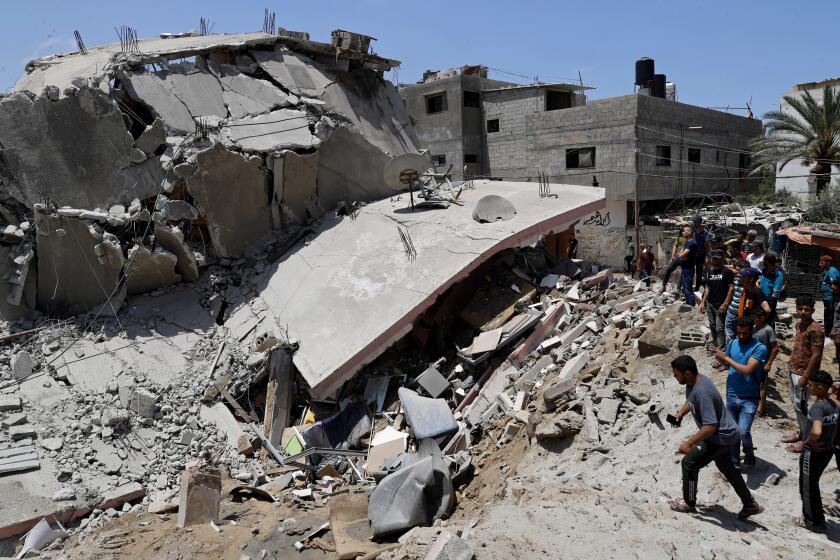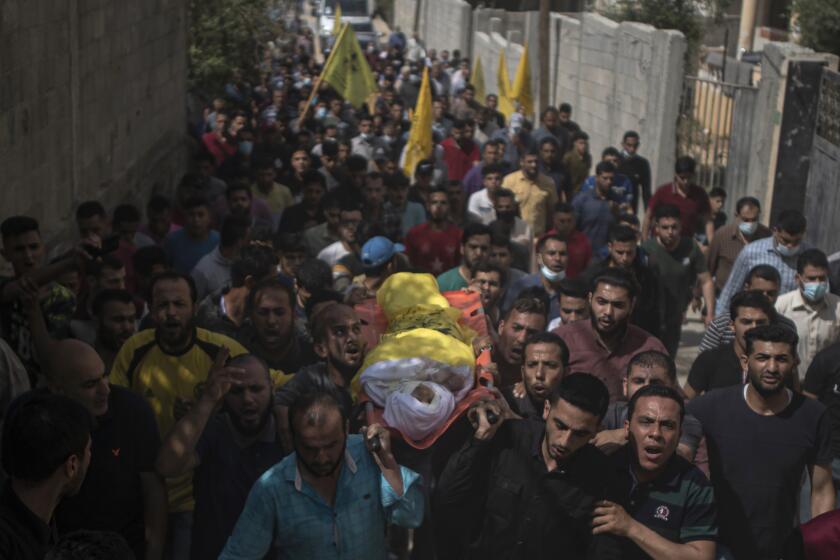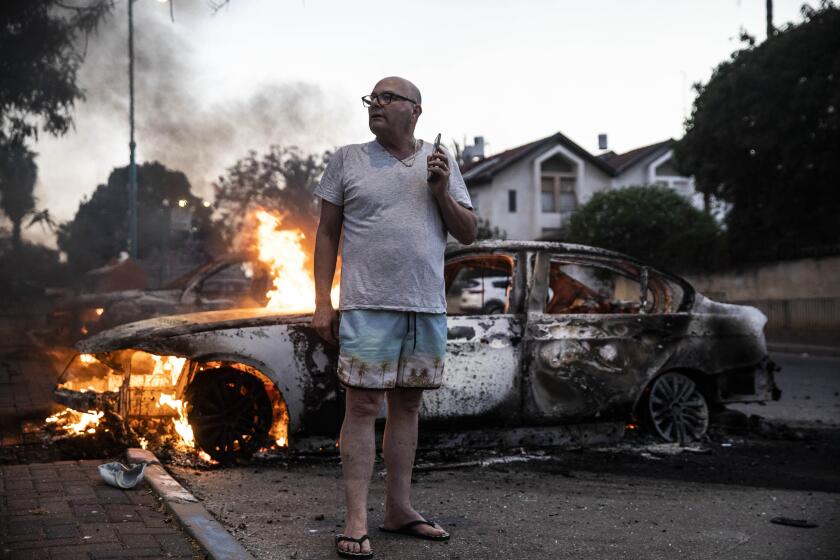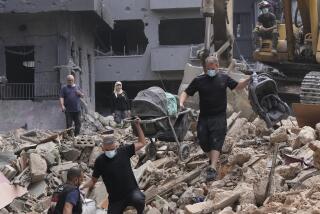âHuge fireâ in the sky: From Gaza, a view of the latest conflict with Israel
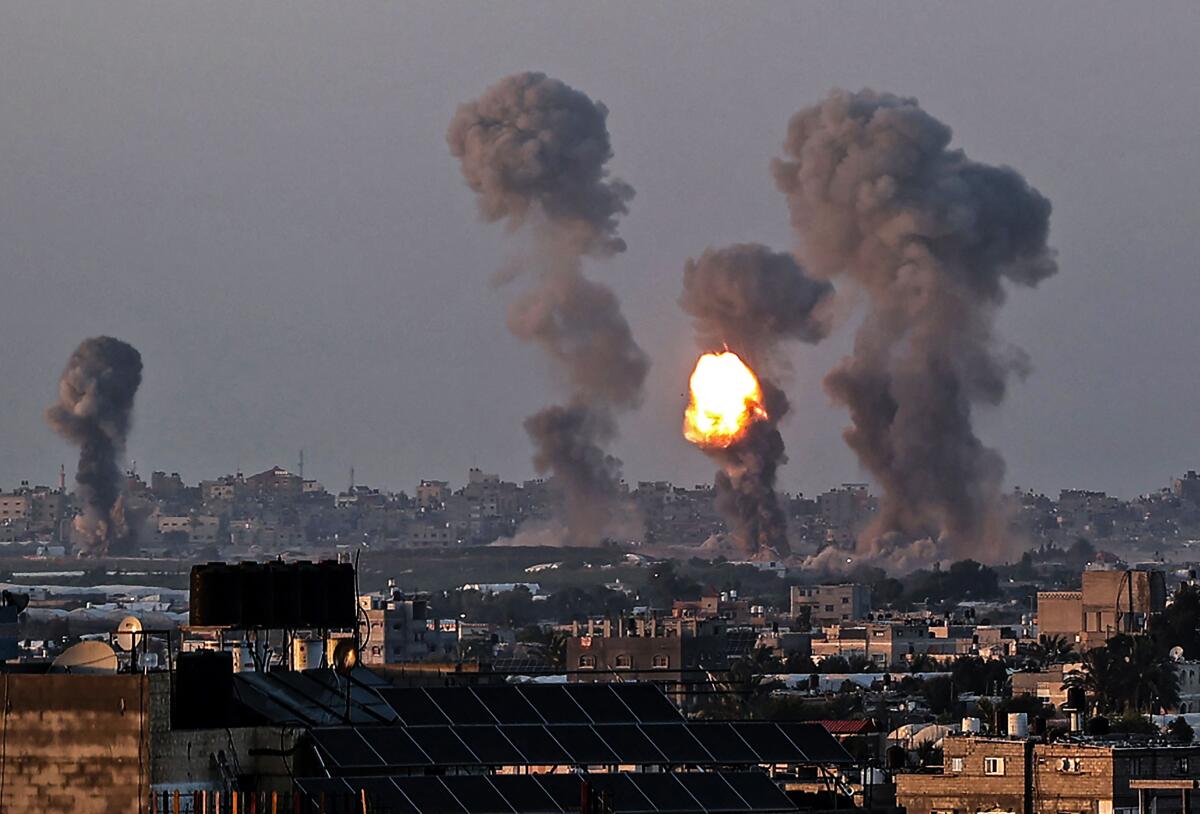
GAZA CITY â As Israeli airstrikes rained down on the northern Gaza Strip, coming closer and closer to the home of the Abed Ati family, the 10-year-old Palestinian girl made a frantic request to her father.
âI want to leave!â she pleaded. But her dad, 36-year-old college administrator Abed Alhamid Abed Ati, recounted his bleak realization: There was nowhere safe to go.
For the record:
5:07 a.m. May 13, 2021A previous version of this story misidentified the location of the Abed Ati familyâs home. It is in Beit Lahiya, not Beit Hanoun.
The familyâs home lies in the agricultural community of Beit Lahiya, a cluster of Palestinian villages famous for succulent strawberries. Fighting between Israel and Palestinian militants â the worst in seven years â raged into a third thunderous night on Wednesday, and through it all, northern Gaza was one of the most dangerous places to be.
Civilians, not combatants, inevitably bear the brunt of such conflict. And Gaza is so small and so crowded â 2 million people crammed into 140 square miles, an area about the size of Las Vegas â that an outbreak of intense cross-border violence touches nearly every aspect of every life.
Beit Lahiya is just south of the Israel-Gaza boundary line and thus a prime spot for Hamas and other militant groups to fire rockets into Israel â more than 1,000 in this bout of fighting, the Israeli military says. That also makes it a prime target for Israeli airstrikes.
U.S. backs Israelâs right to self-defense but says military has an âextra burdenâ to avoid killing civilians as scores of Palestinians die in Gaza.
By Thursday morning, , the Gaza death toll in bombardment that began Monday night had reached 83, 17 of them children, according to the Health Ministry, which tallies casualties. At least 480 people were reported wounded.
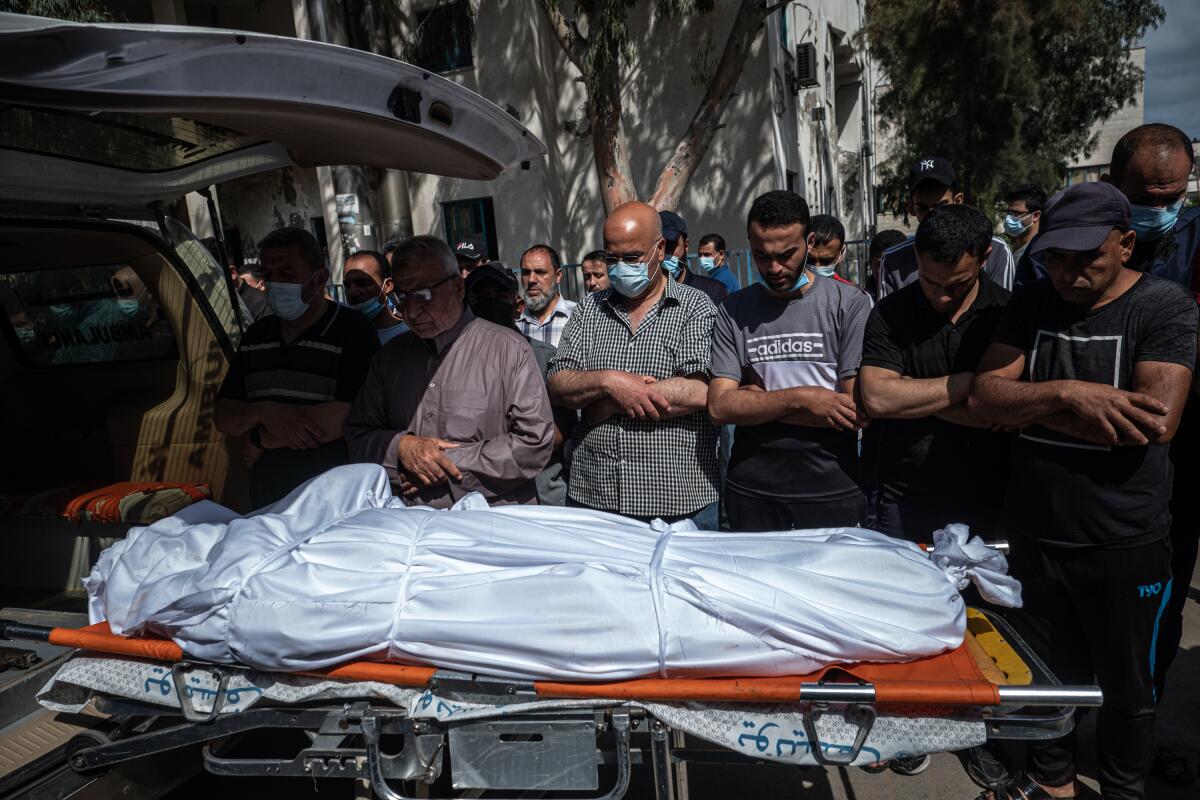
In Israel, seven fatalities had been reported as of Wednesday, including the first death of a soldier, and one small child who was killed in a rocket strike on an apartment building. Scores have been injured.
In Beit Lahiya, the Israeli bombardment was close enough and powerful enough to buckle a heavy metal door to the Abed Ati home. The structure was scorched by strikes as the family of five â joined by frightened neighbors and relatives seeking shelter â cowered inside.
The sky was âcolored with huge fire,â Abed Ati said, and the noise was overpowering. When his 10-year-old ran to him for comfort, he embraced her and tried to offer soothing words, but few came to him.
âThere is no other place to go to,â he said.
To the south in Gaza City, the coastal stripâs main urban center, the bombardment was unremitting, toppling a high-rise building and peppering crowded districts with explosions. Airstrikes, which Israel said were aimed at military targets, hit multi-story tower blocks, showering the streets below with debris.
The violence between Israel and Palestinian militants goes on with an Israeli airstrike killing a Hamas commander and rocket fire from Gaza causing a death.
Even so, Mayson Hatu, a 50-year-old Palestinian mother of two, was determined to celebrate this weekâs start of Eid al-Fitr, marking the end of Ramadan, the holy month of fasting and prayer for Muslims.
As she always did, she got new outfits ready for the children, and prepared a festive dish called fesikh, or salty fermented fish. She, her husband and children planned to celebrate at the home of relatives who lived in another part of the city.
In the growing disorder, no taxi could be found Tuesday night. So she and her 65-year-old husband, Saeed Hashem Hatu, asked a neighbor who owned a taxi to give them a lift.
En route, the car was hit by an airstrike that killed the couple and neighbor Mustafa Kordia, the driver. Their two young children were injured. It got worse: A subsequent strike, as bystanders rushed toward the stricken vehicle to try to help, killed a 28-year-old man and a 47-year-old man, witnesses said.
A furious mourner brandished large slices of Mayson Hatuâs painstakingly prepared fesikh, pulled from the wreckage of the car.
Israel says it is conducting pinpoint strikes against militant leaders and operatives, and Hamas on Wednesday acknowledged the death of a senior commander in one such hit. But Mahmoud Mazen Kordia, the 24-year-old brother of the slain driver, said his sibling had nothing to do with the militants and was only helping out a family he knew and liked.
The Hatus, he said, âare our nice neighbors who couldnât find a taxi in this war to take them to celebrate Eid.â
Israel and Hamas last fought a full-scale war in 2014, and cross-border fire in and near Gaza is not unusual. But in Beit Lahiya, Abed Ati said the bombardment was the worst he could ever recall.
âAll places are a target in Gaza,â he said. âThis is a psychological war.â
As rockets from Gaza streaked overhead, Arabs and Jews fought each other on the streets below.
Gazaâs population, already struggling with waves of coronavirus cases, a faltering electrical grid and lack of clean drinking water, is almost completely cut off from the outside world. Access is largely controlled by Israel, and there is little movement in or out of the tiny Mediterranean enclave.
Abed Ati worried that the fresh fighting was yet another setback to the youngest Gazans.
âThe children were already isolated, and now they are living through this,â he said. âI donât think this is easy for them.â
When others in the neighborhood sought refuge at his home, Abed Ati took them in â but doubted they were any safer there than elsewhere. His mother was injured by shrapnel, and then a pregnant neighbor needed to be rushed to the hospital. No sooner had he returned home than a new crisis awaited.
âI came back and found another neighbor injured by shrapnel to his face,â he said.
They headed straight back to the hospital.
Salah is a special correspondent. Times staff writer Laura King in Washington contributed to this report.
More to Read
Sign up for Essential California
The most important California stories and recommendations in your inbox every morning.
You may occasionally receive promotional content from the Los Angeles Times.
